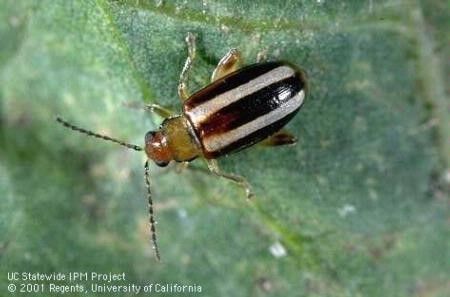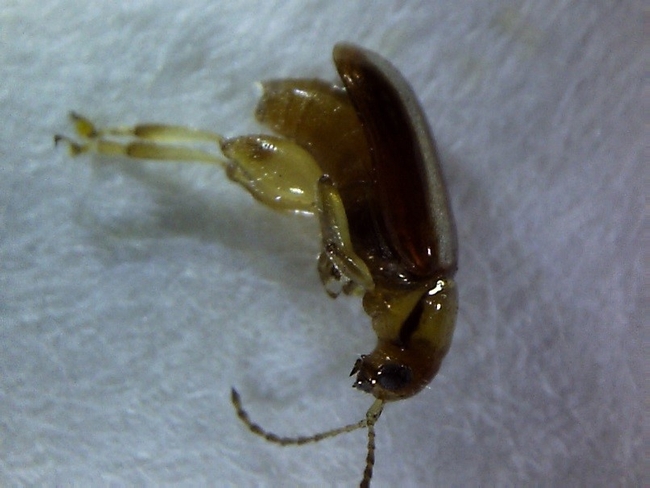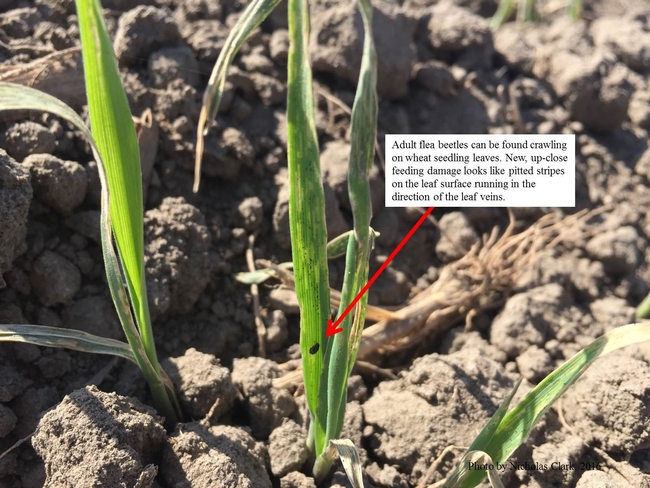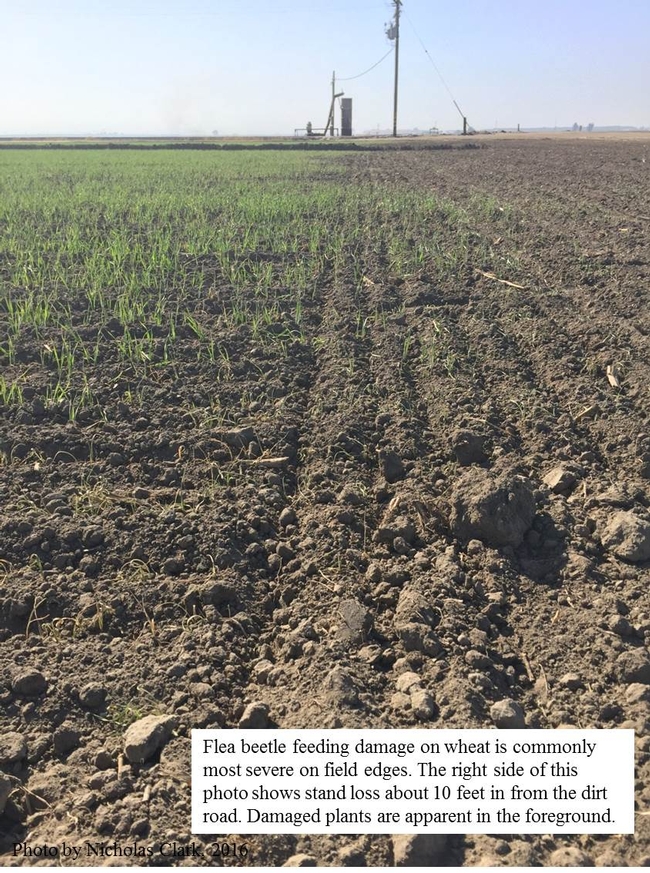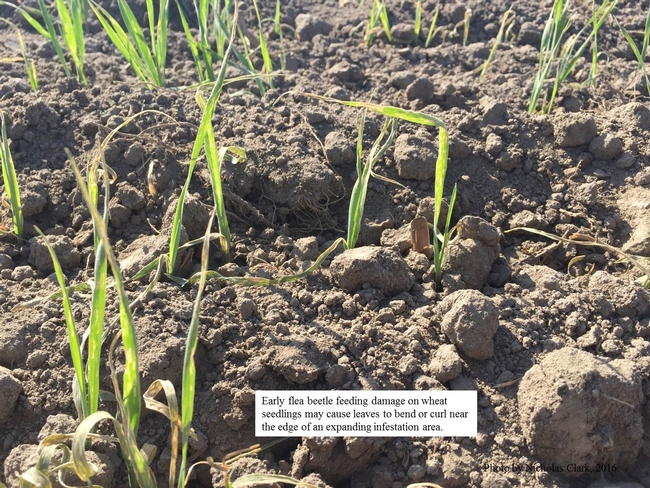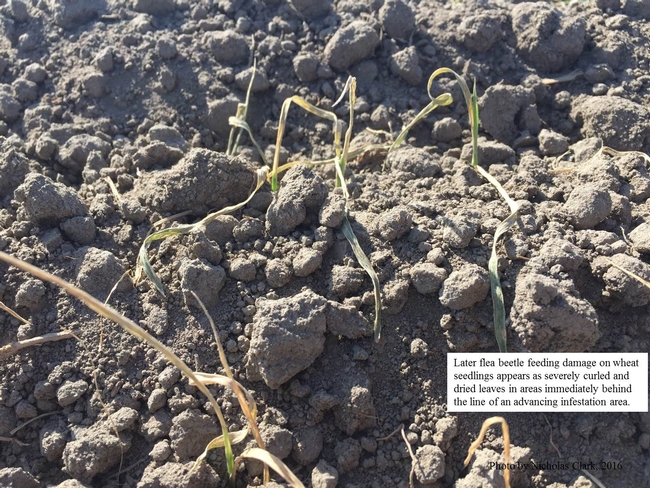PCA's and field scouts, be on the lookout with your hand lenses this late fall for flea beetles in recently emerged small grains that are planted near forage sorghum fields. Check sorghum fields as well for these beetles if there are plants still standing and you expect a small grain crop to come up soon within that field or adjacent to it. Weeds may also be a transitional host for the beetle, so good weed control between crops and along field edges is important. The adult beetles are very small (1-3 mm long), are various in color patterns depending on the species, have enlarged hind leg femurs (upper part of hind leg), actively crawl on sorghum and small grains leaves, and will readily jump like a flea when disturbed. Still, the most recognizable indication of this pest is its damage.
On a recent farm call to Pixley, extensive damage to 1-2 leaf stage wheat was observed on field edges about 10 feet in from the road. The severity of the damage ranged from minor chewing injuries on single leaves of scattered plants near the actively moving edge of an infestation to an entire swath of plants being killed. Kansas State University Extension noted that a population of 3-5 beetles per foot of row is enough to kill seedlings. They also mentioned that damage is most severe and potentially fatal on recently emerged seedlings, and spot treatments of insecticides can be effective when infestations are localized to field edges. However flea beetles can reside in soil between crops and may potentially infest areas within a field. Adults live only about a week in the soil, whereas larvae will feed on roots and crop residue and persist in the soil longer. There are a number of pyrethroid-based products registered in CA that should be effective at controlling this pest. Consult with your trusted searchable label databases or retailers to identify a usable product. Replanting damaged areas without an insecticide treatment might just provide fresh food for the beetles to return to that area.
At this point, I haven't seen any indication that this pest is emerging as an important one. On the contrary, it seems like an opportunistic pest in small grains – one that is taking advantage of a unique situation in the San Joaquin Valley. As there have been more and more plantings of sorghum (especially late and triple-cropped), and forage growers are under pressure to get the wheat in the ground to take advantage of early fall rains, the opportunities multiply for this pest to make its way across dirt roads and small ditches to chew small grain seedlings.
Attached Images:
